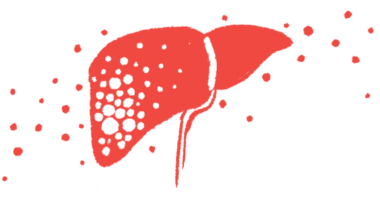Low Blood Sodium of Porphyria May Also Cause Reversible Brain Lesions

The low blood sodium levels associated with acute intermittent porphyria (AIP) may also contribute to reversible splenial lesion syndrome (RESLES), a case report suggests.
The study, “Reversible splenial lesion syndrome (RESLES) due to acute intermittent porphyria with a novel mutation in the hydroxymethylbilane synthase gene,” was published in the Orphanet Journal of Rare Diseases.
Acute intermittent porphyria is caused by mutations in the HMBS gene, which provides instructions to make an enzyme called hydroxymethylbilane synthase that is required for the production of heme — a molecule essential for red blood cells to transport oxygen, and for the breakdown of compounds in the liver.
RESLES is characterized by reversible lesions in specific parts of the brain, particularly the splenium of the corpus callosum, a bundle of nerve fibers that allow the two brain hemispheres (halves) to communicate.
Although associated with several disorders, including infections, seizures, metabolic diseases and even antiepileptic treatment withdrawal, the mechanisms leading up to RESLES are still poorly understood.
“To the best of our knowledge, there are no reports to date of reversible splenial lesions associated with AIP. Here, we described an AIP case representing RESLES, which was confirmed by genetic testing of HMBS,” the scientists wrote.
A 20-year-old Chinese woman arrived at a hospital with severe continuous abdominal pain, nausea, vomiting, and dark tea-colored urine. She was initially diagnosed and treated for an intestinal obstruction, but her blood sodium levels were lower than normal (121.9 millimoles/L; normal range 135–145 mmol/L). She had started feeling sleepy and confused, while also experiencing convulsions.
She was transferred to the hospital’s emergency department the next day. Lab tests revealed her sodium levels had dropped to 108 mmol/L. Biochemical tests also showed she had porphobilinogen (PBG) and no uroporphyrins in her urine, confirming the diagnosis of AIP.
After four days of treatment with intravenous glucose (blood sugar) and fluid restriction, and three days with tolvaptan — a medication normally used to treat hyponatremia (low blood sodium levels) — she regained consciousness. By then, her blood sodium levels had progressively increased to 135 mmol/L.
Brain MRI scans revealed lesions in a particular region of the corpus callosum, which were significantly eased in scans performed two weeks later.
Genetic analysis to determine the causes of these symptoms found that the patient and her mother both carried a previously unidentified nonsense mutation (c.594G > A) in the HMBS gene that led to the replacement of the amino acid tryptophan by a stop codon. Her father did not carry any mutations.
A nonsense mutation refers to a gene alteration that inserts a stop codon — a sequence of three nucleotides, the building blocks of DNA — that interrupts the conversion to RNA and makes proteins shorter. Amino acids are the building blocks of proteins.
“In conclusion, we report the first reported case of RESLES following AIP with a novel HMBS nonsense mutation,” the investigators wrote. “Our case report widens the phenotype [set of symptoms] of the neurological manifestations associated with AIP.”
They also said that hyponatremia could be a contributing factor for the development of RESLES, adding that “further clinical, radiological and genetic studies of RESLES are necessary for a definite conclusion.”






